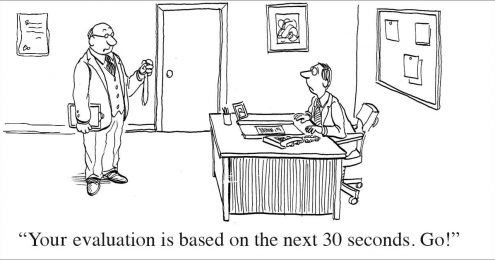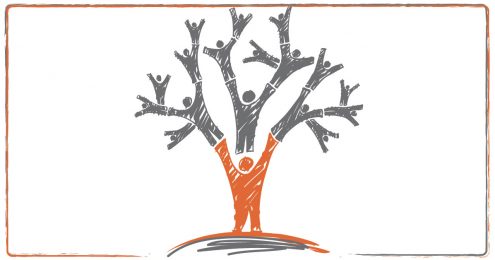If I had to point to the two most common questions I randomly get (about nonprofits anyway), it would be these:
- Can you help me find board members?
- Can you help me figure out how we could be raising more money?
When I am asked the board member question, the smartass in me wants to ask a few follow-up questions:
You lost board members? When were they last seen? What were they wearing?
But there is a certain element of desperation in their voice so my sad attempt at comedy feels off the mark.
Today, I want to focus on the second question. In this post I am not going to tell you how to raise money. Forgive me if I got your hopes up. But don’t give up on me.
But here’s what I am going to do. I’m going to help you to dissect the question. Because that’s where the treasure will be found.
GETTING TO THE ROOT OF IT ALL
“We’d like Joan to come help us create a development plan. We really need to raise money – we want to scale but we just make ends meet.”
My office probably gets a call like this one a week. I approach the answer a little differently.
Some consultants will say, “Sure I can assess your current development program, benchmark your efforts against similar organization in your sector, and make some recommendations on how to change things up in a way that will really help.”
Me? I can’t bear to do that.
A client once compared me to the fictional Dr. House on the Fox show, House (without the substance abuse). I look for clues to diagnose what is really happening.
Someone will say they need help fundraising and I’ll ask them to describe their board chair. They will see how their weak chair is a root problem.
Or I’ll ask the “patient” to tell me about their aspirations as an organization. Maybe I’m told that they want to have a cash reserve. Or that they want to increase the number of people they serve. These are good, but not audacious. Lack of Inspirational aspiration can be a root problem.
And so it goes.
So instead of asking for your date of birth, asking for a copy of your insurance card, or what meds you are on, I’m going to pose a series of more relevant questions. Simple yes or no questions.
Then I will assess and prescribe.
THE “WHY CAN’T WE RAISE MORE MONEY” ASSESSMENT
Instructions are simple. It’s kind of like 20 questions. In fact, there really are 20 questions! For each item below, mark it off as “yes” or “no”.
My organization has a clear mission and fills a unique niche in the sector and our community.
Yes __ No__
Every one on my board makes an annual financial contribution – 100% giving.
Yes __ No__
Each of my board members knows different people.
Yes __ No__
We all agree on what our organization aspires to do.
Yes __ No__
Most of my board members can easily and enthusiastically offer someone a 2-3 minute elevator pitch about what the organization does, why it’s important and bring it to life with a short anecdote.
Yes __ No__
The board chair is an enthusiastic champion and excellent motivator of volunteers. May not have fundraising experience but loves the org and welcomes the opportunity to tell people about the work.
Yes __ No__
Our social media presence is growing and more and more folks are engaging with the content, building a very nice pipeline of prospects.
Yes __ No__
Lots of people know about us and we are quite visible. We are not a “hidden gem”.
Yes __ No__
Our staff leadership has an external presence and engenders trust in the organization.
Yes __ No__
We have a strong board development committee that sees its role as different and broader than a group that monitors staff progress against fundraising goals.
Yes __ No__
We are committed to stewarding our donors and our retention rate is high.
Yes __ No__
We have a healthy revenue mix and are not overly reliant on any single source.
Yes __ No__
I have a strong development team.
Yes __ No__
Our organization values diversity in an authentic way – we are building toward a culture of inclusion and in so doing are able to invite more and diverse folks to be a part of our organization.
Yes __ No__
When we recruit board members we are clear that we will be looking to them to partner with us in fundraising.
Yes __ No__
We have a culture where we take risks. We talk about what’s not working in our efforts to fundraise and learn when things go awry.
Yes __ No__
If a prospective funder asked what you hope to accomplish this year, you can point to year 1 goals in a simple and compelling strategic plan.
Yes __ No__
We work hard to ensure that board members have the tools, resources and motivation to be great ambassadors.
Yes __ No__
We can speak to the impact of our work with something more than stories.
Yes __ No__
We have an annual board retreat that engages and enriches board members and motivates them to be vocal and visible ambassadors.
Yes __ No__
This assessment can be a great exercise to do with your board and/or staff. To make that easier, you can download a PDF, print copies for each board or staff member, and ask each of them to mark “yes” or “no” for each item.
==> Download the assessment here
You may be greatly surprised by what you find.
SO HOW DID YOU DO?
Go back through each question. If you answered “yes”, move on to the next one. But if you answered “no,” you may have identified a big red flag on the field. For each “no,” here’s some further advice….
1. My organization has a clear mission and fills a unique niche in the sector and our community.
If I met you at a cocktail party and you started talking about your organization, and I asked you what the mission was, what would you say?
2. Every one of my board makes an annual financial contribution – 100% giving.
No? Here are some ideas on how to get your board to approve a give and get policy.
3. Each of my board members knows different people.
If not, it’s important that you expand your pool of donors and volunteers.
4. We all agree on what our organization aspires to do.
This one is particularly important. Do you have a coherent and communicated vision? Need some inspiration? Here’s a small nonprofit that thinks really big.
5. Most of my board members can easily and enthusiastically offer someone a 2-3 minute elevator pitch about what the organization does, why it’s important and bring it to life with a short anecdote.
Here’s another one that is on the more important side. If you’re blowing this one, you’re hardly alone. If what I see at many board and staff retreats is true, it may be true that most nonprofit people are messing this up. Here’s how to fix it.
6. The board chair is an enthusiastic champion and excellent motivator of volunteers. May not have fundraising experience but loves the org and welcomes the opportunity to tell people about the work.
You had better have a 5-star board chair. Not sure if you do? Click the link for a checklist.
7. Our social media presence is growing and more and more folks are engaging with the content, building a very nice pipeline of prospects.
Robin Cembalest has built a social media following of tens of thousands for “the art world and beyond” and spoke with me on my podcast about how to bring a more artful approach to your social media outreach.
8. Lots of people know about us and we are quite visible. We are not a “hidden gem”.
Not the case? Here are some ideas about how to get inexpensive PR for your nonprofit.
9. Our staff leadership has an external presence and engenders trust in the organization.
The ability to speak in public is crucial for many staff leaders and an area that many of us can improve. Here are my tips for how to give a first-rate event speech.
10. We have a strong board development committee that sees its role as different and broader than a group that monitors staff progress against fundraising goals.
Particularly important… But what exactly makes for a great board fundraising committee?
11. We are committed to stewarding our donors and our retention rate is high.
But if that’s not the case, here’s how you can improve retention, renewals, and make your donors feel like a million bucks.
12. We have a healthy revenue mix and are not overly reliant on any single source.
Perhaps this is the case today. But perhaps you’re not sure what your revenue mix will look like in the future. Here’s how to properly forecast your fundraising revenue.
13. I have a strong development team.
Not yet? Not sure? Or maybe you have no development team at all? Here’s how to build a great one.
14. Our organization values diversity in an authentic way – we are building toward a culture of inclusion and in so doing are able to invite more and diverse folks to be a part of our organization.
There’s a diversity problem in the nonprofit sector. One reason is that we’re not doing a good enough job developing a diverse leadership pipeline, especially when it comes to leaders of color, and in particular women of color.
15. When we recruit board members we are clear that we will be looking to them to partner with us in fundraising.
The board interview process is critical. Here are the questions you should ask for board recruiting.
16. We have a culture where we take risks. We talk about what’s not working in our efforts to fundraise and learn when things go awry.
Look, we all make mistakes. But here’s the thing. Clarity only comes from taking action. And if we’re so afraid to take action until everything is perfect, we’ll never accomplish our big goals. You want to nurture a culture of experimentation and innovation. And that means a willingness to try things. So, when you do inevitably screw up, here’s how you can get past your fundraising mistakes.
17. If a prospective funder asked what you hope to accomplish this year, you can point to year 1 goals in a simple and compelling strategic plan.
Strategic plan? Painful, right? But when you do strategic planning right, it’s game changing.
18. We work hard to ensure that board members have the tools, resources and motivation to be great ambassadors.
And that absolutely includes keeping them engaged between board meetings.
19. We can speak to the impact of our work with something more than stories.
I’ve got a podcast episode on this topic coming up soon with Chari Smith. I highly recommend her book, Nonprofit Program Evaluation Made Simple: Get Your Data. Show Your Impact. Improve Your Programs. In fact, I even have a quote on the back of the book. 🙂
20. We have an annual board retreat that engages and enriches board members and motivates them to be vocal and visible ambassadors.
But maybe you don’t do retreats. Or everybody dreads them. If that’s the case, here’s how to run a really valuable nonprofit retreat.



